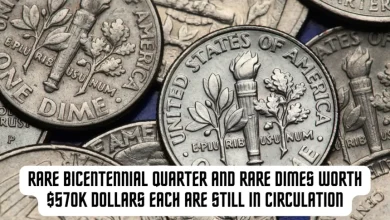The Enigmatic World of Quantum Mechanics: A Journey into the Microscopic Marvels of the Universe
The world of quantum mechanics is a realm of scientific inquiry that challenges our everyday understanding of reality. At the smallest scales of existence, the behavior of particles and waves becomes baffling, counterintuitive, and often paradoxical. In this article, we’ll take a fascinating journey into the enigmatic world of quantum mechanics, exploring the fundamental principles, bizarre phenomena, and the implications of this branch of physics.
The Birth of Quantum Mechanics
Quantum mechanics emerged in the early 20th century as a response to the limitations of classical physics. While classical physics successfully explained the macroscopic world, it failed to account for the behavior of particles on the atomic and subatomic levels. Scientists such as Max Planck, Albert Einstein, Niels Bohr, and Erwin Schrödinger revolutionized our understanding of the universe by developing quantum mechanics.
Quantization of Energy
One of the cornerstones of quantum mechanics is the quantization of energy. Max Planck’s groundbreaking work in the late 19th century laid the foundation for this concept. Planck proposed that energy is not continuous but comes in discrete packets called quanta. This concept explained blackbody radiation and became the precursor to the famous equation E=mc^2, formulated by Albert Einstein, which describes the equivalence of mass and energy.
Wave-Particle Duality
Perhaps one of the most bewildering aspects of quantum mechanics is wave-particle duality. It suggests that particles like electrons and photons exhibit both wave-like and particle-like properties, depending on how they are observed. This fundamental duality was first described by Louis de Broglie and later confirmed through experiments like the double-slit experiment.
The Double-Slit Experiment
The double-slit experiment is a central feature of quantum mechanics. It involves firing particles, such as electrons or photons, at a barrier with two slits. When the particles are observed, they behave like particles and create two distinct bands on the screen. However, when unobserved, they exhibit interference patterns, as if they were waves. This experiment highlights the crucial role of the observer in quantum events and has been the source of much philosophical debate.
Uncertainty Principle
Werner Heisenberg’s uncertainty principle is another essential concept in quantum mechanics. It states that it is impossible to know both the position and momentum of a particle with absolute precision. The more precisely you know one of these properties, the less precisely you can know the other. This inherent uncertainty challenges the determinism of classical physics and introduces a level of unpredictability at the quantum level.
Quantum Superposition
Quantum superposition is a fascinating phenomenon that allows quantum particles to exist in multiple states simultaneously. For example, an electron can be in a superposition of spin-up and spin-down states until measured, at which point it collapses into one of the two states. This property is exploited in quantum computing, where quantum bits (qubits) can represent both 0 and 1 at the same time, potentially enabling incredibly powerful computational processes.
Quantum Entanglement
Entanglement is another bewildering aspect of quantum mechanics. It occurs when two or more particles become correlated in such a way that the state of one particle instantaneously influences the state of the other, even if they are separated by vast distances. This phenomenon was famously described by Albert Einstein as “spooky action at a distance.” Entanglement has been experimentally confirmed and plays a crucial role in the field of quantum communication.
Schrodinger’s Cat
Erwin Schrödinger proposed a famous thought experiment known as Schrödinger’s Cat to illustrate the absurdity of quantum mechanics. In this scenario, a cat is placed in a sealed box with a radioactive atom that may or may not decay. If the atom decays, a vial of poison is released, killing the cat. Until the box is opened and the cat is observed, it exists in a superposition of both alive and dead states. This paradox highlights the weirdness of quantum mechanics and the role of observation in collapsing probabilities into definite outcomes.
Quantum Mechanics in Practice
While quantum mechanics can seem otherworldly and abstract, it has real-world applications. Quantum technology has given rise to innovations like MRI machines, lasers, and superconductors. Quantum cryptography ensures secure communication, and quantum computing holds the promise of revolutionizing data processing, particularly in complex simulations and cryptography.
The Future of Quantum Mechanics
Quantum mechanics continues to be a fertile ground for research and innovation. Scientists are exploring quantum computing, quantum teleportation, and quantum teleportation. These developments may unlock new possibilities in fields as diverse as medicine, material science, and cryptography. Moreover, quantum mechanics is helping us delve deeper into the fundamental nature of the universe, answering age-old questions and uncovering new mysteries.
Conclusion
The enigmatic world of quantum mechanics challenges our everyday understanding of the universe. From wave-particle duality and quantum superposition to the mysterious phenomenon of quantum entanglement, this branch of physics introduces us to a realm where the ordinary laws of classical physics break down. Despite its perplexing nature, quantum mechanics has paved the way for technological breakthroughs and continues to unravel the secrets of the universe, offering a tantalizing glimpse into the future of science and technology. As we peer into this microscopic marvel, we find that the quantum world is as bizarre as it is beautiful, a testament to the boundless wonders of the cosmos.



